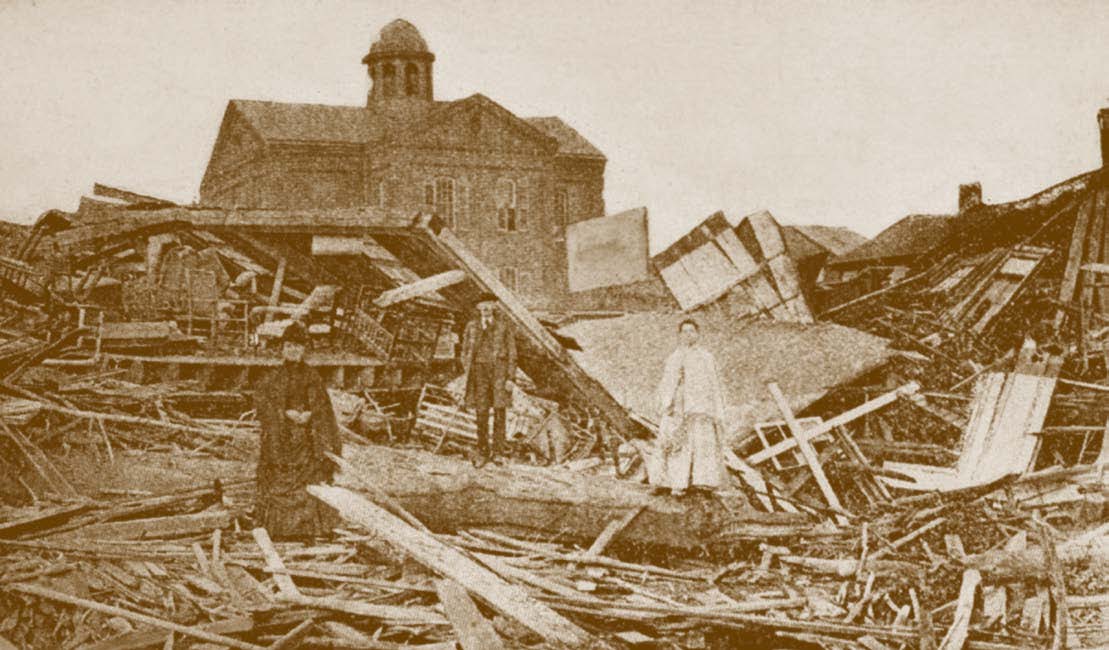Mixed use is a hallmark of smart growth. Modern conventional diffuse growth dictates the separation of uses, with miles and miles of suburban residential developments unbroken by business districts. Smart growth practitioners design urban areas where residential and commercial areas are in close proximity, if not intermixed. Commercial buildings can be built to much more rigorous standards than residential single family buildings, no matter what the type of construction. The nearby presence of substantial commercial buildings could provide very real refuge when storms approach with no real time for evacuation. But to be bona-fide refuges, they must be nearby — not miles away as they were in most of the lower 9th ward and elsewhere in New Orleans. This idea of refuge on a community scale is the “safe room” writ large.
Galveston, TX, the site of the deadliest storm in U.S. history, provides a good example of how such a refuge could work. Most of Galveston was destroyed by the 1900 hurricane, but most of the commercial district withstood the storm and still stands today.
The highest survivorship was from people who took refuge in this zone (fewer took advantage of the refuge than could have because they were led to believe that the storm would not be serious {Larson, 2000}).
The only way to have substantial buildings within walking distance of residential areas is to build an area compact enough that pedestrian traffic could be a significant part of the retail business. Most municipalities along the Gulf Coast have codes that proscribe this kind of mixed use, and most places prescribe such large lots for single family homes (> 7,000 sq feet) that walkability is out of the question.




